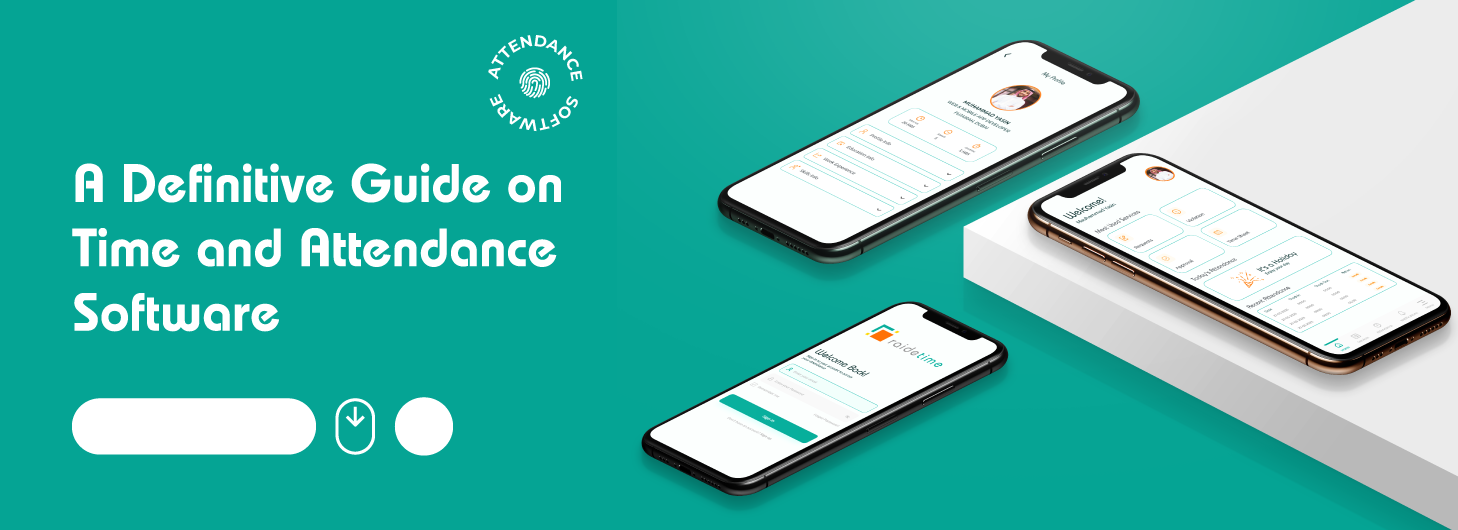Written By
Tauseef Ahmad
2025-Jan-17
How time and attendance tracking Drives Unseen Excellence in Healthcare?
The
basis of good healthcare is efficient
staff management. The outcomes depend most on how much available staff
put in effort to manage time and attendance. Hospitals and health facilities
often suffer from complexities in scheduling, compliance issues, and
operational efficiency compulsions.
Time and attendance systems smooth out
aspects of staff management where errors are reduced and productivity improved.
This blog will discuss their contribution to healthcare, the issues they
address, and the effects on hospital operations. We’ll
cover why they matter, the challenges they address, and how the time and attendance
software drives excellence with an innovative system.
Challenges in Healthcare Attendance Management
1. Irregular Shifts and Scheduling Complexity
Healing centers are on standby every hour of every day,
and with such off and on-duty schedules, employees work on shifts that allow
seamless patient care.
While other professionals leave work at 5 or take some
time off, a health professional could wait for days and nights, with at least a
few hours of that time allocated for being on call and a last-minute change
sometimes.
Assume that the nurse has
back-to-back night shifts, only because of an error in the manual scheduling.
Over time, such mismanagement leads to fatigue and lower morale.
A time and attendance system addresses this by offering
automated scheduling tools. These tools analyze staff availability, preferred
work hours, and existing commitments to create conflict-free schedules. These
systems promote fairness and efficiency by ensuring that no employee is
overburdened.
2. High Absenteeism and Short-Staffing
Absenteeism is a significant issue in healthcare. One
missed shift can disrupt the whole team, leaving staff scrambling for
replacements. These gaps can severely affect patient care in crucial areas like
ICUs and emergency rooms.
Consider a hospital that uses an automated hospital staff attendance system. As
soon as an absence is detected, the system alerts the administrators in real
time so backup staff can be called in without delays. This will keep everything
running smoothly in advance during unpredictable obstacles.
3. Compliance with Labor Laws
Healthcare
establishments have stringent labor laws concerning working hours, overtime,
and leave policies. Any violations may lead to severe fines and tarnish an
organization’s reputation.
For
example, if a hospital fails to record overtime hours accurately, it may
inadvertently overwork its staff and cause legal problems.
With automated tracking, attendance solutions for
healthcare provide detailed reports on employee work hours. These records prove
compliance during audits, protecting organizations from potential
liabilities.
4. Staff Fatigue and Burnout
Burnout is an epidemic in silence in health care, long
hours require shift work and emotional demands. Overworked employees are more
prone to errors that may endanger a hospital patient's life.
An attendance
biometric system for health care can help combat such a scenario by
monitoring work hours and disallowing fat overtime work. It equally distributes
the load to ensure that each staff is given enough rest to focus on the job.
Thus, this reduces the risk of burnout.
5. Manual Errors and Inefficiency
Using manual means to register attendance is not only
old-fashioned, but it also brings many errors. For example: If payroll
calculations are based on incorrect attendance records. The result? Disputes,
mistrust, and a demotivated workforce.
By automating attendance tracking, hospitals eliminate
such inefficiencies. These systems capture accurate real-time data, ensuring
error-free payroll and boosting employee satisfaction.
6. Difficulty in Resource Allocation
Resource
allocation is vital in healthcare. Every department needs proper staffing,
around the clock. Without accurate attendance data, administrators can’t
allocate resources efficiently. This leads to overstaffing in some areas and
shortages in others.
Time tracking for healthcare
professionals provides a clear overview of staff availability,
enabling data-driven decisions for resource allocation. This ensures that every
patient receives timely care.
Key Features of Time and Attendance Systems for Healthcare
1.Automated Tracking of Employee Attendance
For instance, if a nurse arrives late due to
unavoidable circumstances. A biometric
attendance system immediately records their exact
check-in time, leaving no room for ambiguity. Automated tracking eliminates
manual inputs, ensuring accuracy and transparency.
2. Shift Tracking for Irregular Working Hours
Hospitals often deal with sudden changes in shift
requirements, such as handling a surge of patients during a flu outbreak. Shift
tracking features allow administrators to quickly adjust schedules, ensuring
that every shift is adequately staffed.
3. Leave Management for Planned and Unplanned Absences
Some of the features of leave management are planned
absences and unplanned absences. Effective leave management is vital for
continuous operations. In this case, self-service portals will allow employees
to submit leave requests. At the same time, time and attendance systems will
enable managers to approve or disallow absences directly according to the
current staffing level.
4. Integration with Payroll and Scheduling Systems
Integrating attendance and payroll record management
leads to easy and precise salary calculations. Take the automatic accumulation
of overtime hours, that means fair employee pay, which is just that simple.
5. Support for Mobile and Biometric Attendance Solutions
Mobile solutions allow field staff such as home
healthcare workers to clock in and out remotely. Biometric systems, on the
other hand, are time fraud-proof, as attendance is verified through the unique
identifiers of individuals such as fingerprints or facial recognition.
Benefits of Implementing Time and Attendance Systems in
Healthcare
1. Enhanced Accuracy and Efficiency
Automated systems reduce manual errors, ensuring that staff
hours are accurately recorded. This accuracy streamlines payroll and boosts
trust among employees.
2. Seamless Shift and Leave Management
By automating complex scheduling and leave management
processes, these systems eliminate conflicts and ensure that every department
is adequately staffed.
3. Improved Compliance
Accurate attendance records help hospitals comply with
labor laws, avoid potential legal issues, and ensure staff welfare.
4. Real-Time Insights and Analytics
Advanced analytics bestow actionable insights to
managers such as trends in absenteeism or overstaffing during specific shifts.
This data enables continuous improvement in staffing strategies.
5. Reduced Absenteeism and Increased Accountability
Such attendance tracking in real-time holds the
employee accountable regarding attending work. Further, such a system would
keep automated alerts in the event of lateness or unauthorized absence. As a
result, more timely and dependable work attendance would be promoted.
6. Improved Employee Satisfaction
Transparency in attendance tracking nurtures trust. A
portal and employee access system that allows employees self-service access to
their schedules and attendance records can be the building blocks for the
engagement and satisfaction many employees sometimes miss.
7. Effortless Integration with Payroll Systems
Fast as well as accurate payroll processing will not
involve manual input of data. Payroll-related disputes shall be minimized and
pay-day will be just in time.
8. Cost Savings
These systems contribute to significant cost savings
from reducing administrative overhead to optimizing resource allocation. The
return on investment becomes evident through improved operational
efficiency.
How Time and Attendance Systems Impact Patient Care
Patient care is closely linked, as well as
strongly related, to employee attendance in the organization. The quality of
care is a function of the staff coverage and their rest.
In a
crowded ICU where timely interventions are achieved, fatigue indeed causes
fewer errors with even workloads.
Real-time
insights prompt administrator’s quick response to emergencies, reallocating
staff to where they are most needed. The results rooted in the organization's
agility are patient satisfaction and an enhanced reputation for the hospital.
Measuring ROI of Time and Attendance Systems
Hospitals can measure the ROI of these systems through
various metrics, including:
- Reduction in payroll errors.
- Decrease in absenteeism rates.
- Improvement in patient satisfaction
scores.
- Cost savings from optimized staffing.
Such systems are precious components to any healthcare
facility, for the cost quote only scratches the surface of the long-term
advantages to be enjoyed eventually.
Efficient staff management is the backbone of quality healthcare
delivery. Addressing challenges like irregular shifts, absenteeism, compliance,
and time and attendance systems empowers hospitals to operate more
smoothly.




